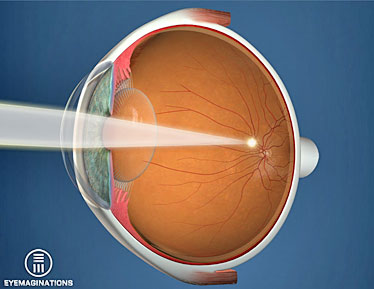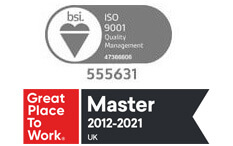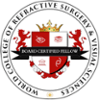Myopia (Short-Sightedness) and Laser Eye Surgery: Where it began
Laser Eye Surgery has become increasingly popular over the decades, emerging as the most common elective procedure in the world. While it can now successfully treat a wide range of refractive errors, the first procedures were designed specifically to correct myopia (short-sightedness). So, let’s take a closer look at where this life-changing treatment began.
What is Myopia?
Myopia – often called short-sightedness or near-sightedness – is the most common refractive error. It is estimated to affect around one in three people in the UK, and it is becoming increasingly prevalent.
The error occurs with the eyeball is slightly longer or the cornea is steeper than it should be (as seen in the image below). As a result, light is focused at a point in front of the retina (the photosensitive layer at the back of the eye). This causes distance vision to appear blurry.

Traditional ways to treat Myopia
As with all refractive errors, myopia is traditionally corrected with the help of external visual aids. Individuals with myopia may need to wear glasses or contact lenses to clearly distinguish objects in the distance, such as road signs. Depending on the severity of the error, this can mean wearing visual aids for large portions of the day.
While contact lenses and glasses are extremely effective at correcting myopia, they each come with a number of drawbacks. Glasses are easily lost or broken and can be burdensome. On the other hand, contact lenses are fiddly and require a strict application and hygiene routine.
Myopia is the ideal condition for Laser Eye Surgery treatment
When Laser Eye Surgery – and its predecessor, keratomileusis – was being developed, it was with myopia in mind. Refractive procedures have typically focused on myopia as it is the most common refractive error worldwide. As such, it is the ideal condition for Laser Eye Surgery treatment.
The treatment works by reshaping the cornea using state-of-the-art laser technology. The ultra-precise lasers used in the procedure remove a pre-determined area of corneal tissue. This corrects the steepness of the cornea and so adjusts the way light is directed into the eye, allowing it to be focused more effectively on the retina and eliminating the short-sightedness.
It’s impossible to describe the delight of seeing the world in sharp focus without visual aids for the first time. It simply has to be experienced to be truly believed.
Freedom from glasses and contact lenses can have a huge impact on everyday life, from performing typical daily tasks to boosting self-esteem. Simple things like showering and cooking become easier, while activities such as swimming and playing with the kids become more enjoyable. Many myopia patients also find that social situations become less stressful, as faces are easier to recognise!
Our Results for Treating Myopia
100% of all London Vision Clinic patients with myopia up to -9.00 dioptres achieved the UK driving standard of 20/32 vision or better.”
Indeed, 97% of our patients with a prescription up to -4.5 dioptres attain even better than 20/20 vision! We consistently deliver exceptional results to all our patients, including those with short-sightedness. Moreover, London Vision Clinic was the first clinic in the UK to offer ReLEx SMILE – a revolutionary new generation of Laser Eye Surgery, highlighting our commitment to offering our patients the best and latest solutions.
So, why not browse our latest results for myopia treatment at our Harley Street clinic? You’ll soon be convinced that we have the perfect solution for your refractive error.
If you’re seriously considering Laser Eye Surgery, you should seriously consider us. If you are suffering from shortsightedness, we can almost certainly help. Find out if you are suitable for myopia treatment at the London Vision Clinic – Get in touch with one of our Patient Care Coordinators or Book a Consultation today.



